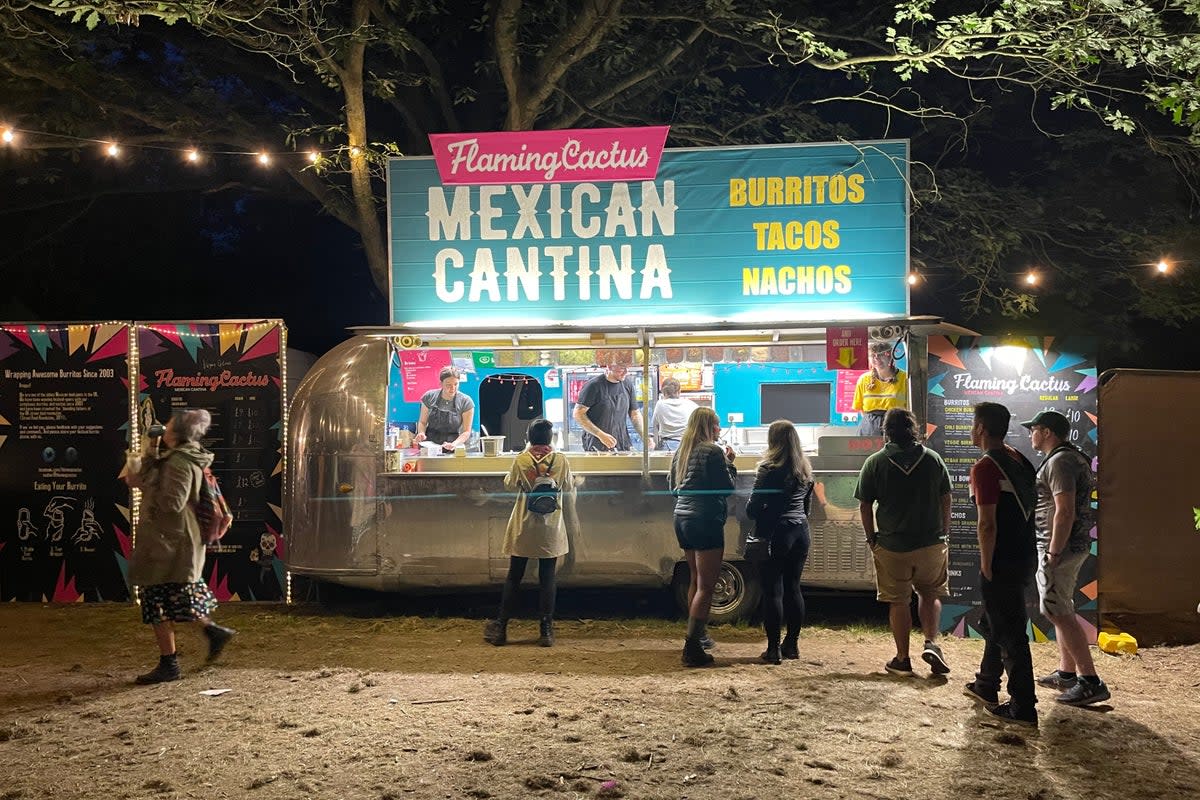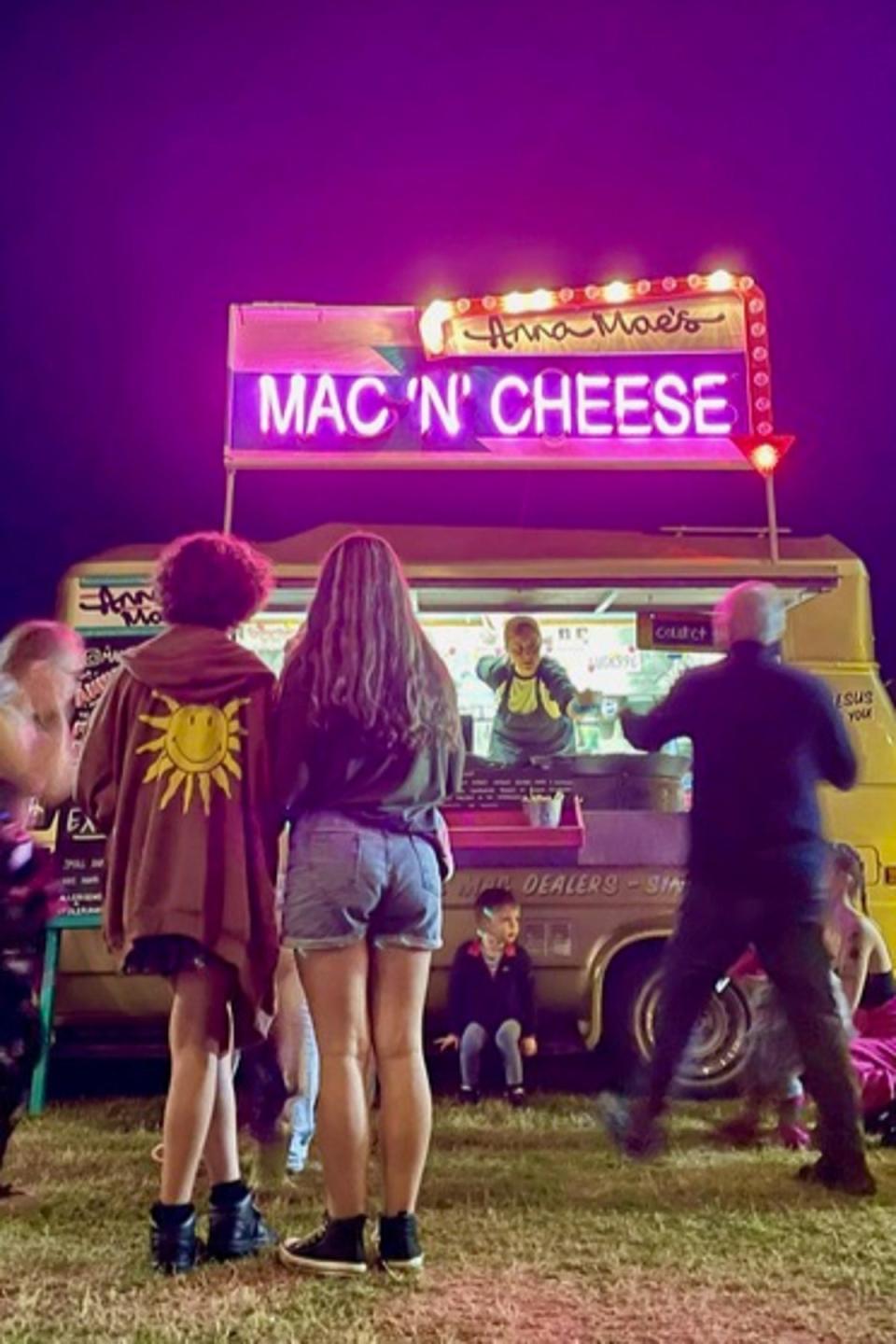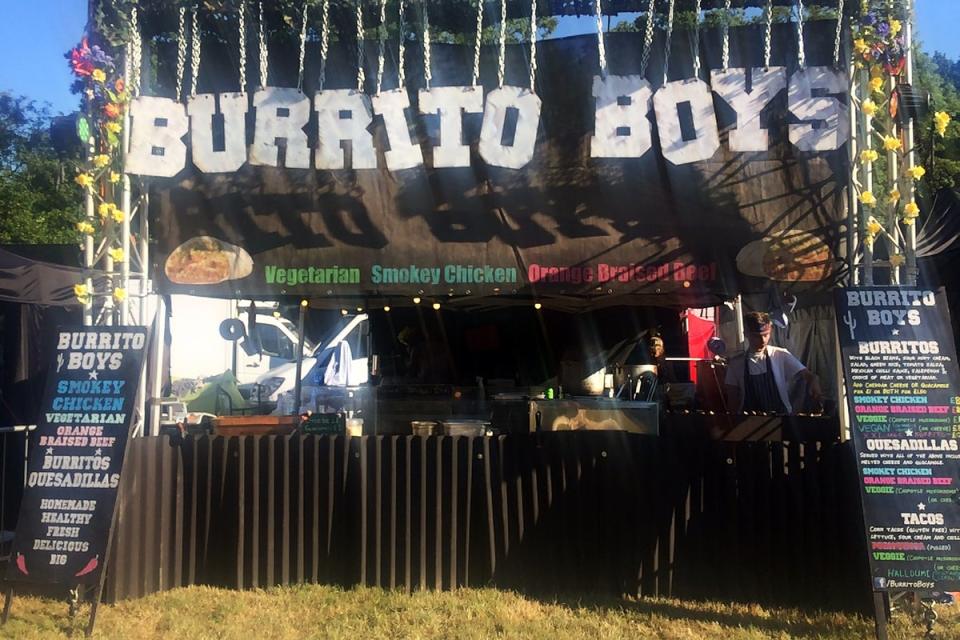What’s it really like to run a music festival food truck

Roland Hewes was on a student exchange in California during the mid-1990s when he discovered Mexican food. He was so taken with the “bold spicy ingredients” he headed to the Baja California peninsula to learn how to cook with them. On his return to London, he graduated with a 2:1 in law and politics, accepted a job in sales in London and began to frequent music festivals during the summer months. But he quickly became frustrated with the food that was on offer. “It lacked quality, choice and affordability,” he said. “It was a far cry from the street food of the Mission District in San Francisco.” Increasingly aware, too, that office life was not for him, he quit his job and set up Flaming Cactus the following year, at a time when “people thought guacamole was mushy peas”. Fast forward 21 years, and you can still find Hewes dishing up tacos to punters at the UK’s biggest festivals.
“My business partner Andrej and I were adamant that we would use only fresh ingredients delivered directly to our loving renovated 1960s airstream at each event, and that we would prepare our food from scratch each day and serve it right before our customers’ eyes,” he says. “And this is exactly what we have been doing for more than 20 years.”
The annual summer festival season is now officially underway, with the veteran rock festival Download taking place at Donington this weekend and Glastonbury the one after that. The general ethos may be the same as it always has been – hanging out in soggy fields listening to your favourite bands – but thanks to people like Hewes, the food scene has transformed beyond recognition. In 2022, the independent food stall industry was worth around £1.2bn, and it’s projected to grow to £1.6bn by 2027/28. Forget burgers and noodles: today there’s a vendor for pretty much everything, from sushi burritos to Goan fish curry and Hawaiian poke bowls.
So what’s it really like, spending the summer months outside, dishing up delicious food to the soundtrack of some of the most exciting new bands in Britain? From an outside perspective, it looks like the dream job. Yet a lot of hard work goes on behind the scenes. For one thing, the job begins several days before public gates are open, setting up the kitchen, collecting deliveries as well as undergoing health and safety inspections. At Glastonbury, this means turning up the Sunday before and working through the week until the following Monday when the festival closes. Hewes says the work demands “a war mentality”. “You’re just pressing through it. It can be very unsociable hours, very hard work. It’s the pressure cooker of the kitchen,” he says. “People always say that it must be really fun, but it’s a bit of a busman’s holiday, you are quite removed from [the festival itself]. I ride about 100 miles a day on a bike between stalls. It’s a nightmare physically and completely unsustainable, but I put my body through it each year.”

Trying to work while everyone around you is determined to party also brings its challenges. James Packman, founder of bacon sandwich van Le Swine recalls sleepless nights working every year at electronic music festival Houghton in Norfolk. “The music is 24/7, and you’re in the back of the van trying to sleep, and the van is shaking with music. I find it brutal. It’s not my type of festival but everyone else seems to love it.”
And if dancing in a mud pit is hard work, try attempting to cook in one. Alex Schomberg, owner of Burrito Boys, worked at Y Not Festival in Derbyshire last year, which was hit with so much rainfall the ground “turned into marshmallow”. “When it was time to pack up, all our vans got stuck in the mud. We had to carry heavy stainless-steel tables about 200 metres to the van – we were falling over in the mud and falling out with each other.” Meanwhile, Anna Mae Clark, co-founder of London’s first mac ’n’ cheese vendor Anna Mae’s Mac ’n’ Cheese, remembers a freak mini tornado ripping through her stall at Secret Garden Party in 2017: “It lasted around a minute, but it just caused havoc.”
Then there is the odd tricky celebrity encounter. Packman recalls the time Jonathan Ross tried to order off-menu. “He came up to the van and tried to order bacon and eggs on a plate as he was trying to eat less bread at the time. I told him you can’t come to Le Swine and not have the full bacon sandwich experience. He told me to f*** off but eventually gave in to the bun.” Clearly Packman’s buns had won him over: “He came back twice more that day.”
But the hardest pressures of all are financial. Inflation has made it nearly impossible for traders to make a profit in recent years while still charging reasonable prices. “Prices have increased around fivefold compared to when I started 10 years ago,” Packman tells me. “I started off selling a bacon sandwich for around a fiver. I can’t now sell a sandwich for £25.”
It’s a very vibrant environment. And it restores a lot of faith in humanity at a festival when you see how well-mannered people are generally
Roland Hewes, Flaming Cactus
Schomberg feels the heat from customers who ask why prices are so high – a burrito from Schomberg will cost between £11 and £12.50. “Some customers don’t understand. If you don’t charge that you don’t make any money, as you’ve also got to pay your staff and pay for ingredients, petrol, electricity. Sometimes you can walk away and hardly make anything. Sometimes you can be busy the whole weekend and lose money. It’s a tough business in that sense.”
Another issue is that increasingly festival organisers are moving from a flat fee to a percentage model, with some requesting up to 35 per cent of a trader’s income. “They do need to be mindful of the percentages they’re charging,” says Hewes. “I’m not the only one who has been turning down events this year on the basis that the percentages are getting too high for us to be able to sell good quality food. You get a lot of places trying to go beyond 30 per cent and then charging you a card handling fee as well. The margins are a lot tighter and there are increasingly more bullets to dodge.”
The biggest change in the street food scene over the past decade has been the increase in quality (and the paperwork, they’re all quick to tell me). Whilst you’ll still find the odd cowboy trader selling frozen food, the emphasis on freshness is part of the draw. Schomberg and his team spend three and a half hours every morning preparing their food, from mashing the guacamole to braising the beef. Clark tells me that all food from Anna Mae’s Mac ’n’ Cheese is cooked to order in a giant cast iron skillet, with a theatrical cheese mountain melting down into the pan and onto cardboard pots. “Now we use truffles as one of our toppings – and we wouldn’t have been able to get hold of that when we started. Kimchi is also so good with mac ’n’ cheese, but no one would have known what that was when we started out.” They all embrace the variety on offer, not least the rise of gourmet dining at boutique festivals such as Wilderness and Lost Village, which offer punters the chance to feast on restaurant-quality fare in tents filled with communal-style tables. “It’s nice to have the option to have a cheap burger at 5am, but you can also get yourself a three-course dining experience, it’s nice to have that balance,” Packman says.

Once the summer season wraps up, traders either work through the winter at events like Winter Wonderland, continue other commitments or flock to sunnier climes. Schomberg, who turns 50 soon, has just arrived in the UK after spending the winter in Colombia and India. He has five months of solid work and an endless stream of festivals ahead of him. “You might get a day off then you might not. We go directly from Glastonbury to Lytham Festival in Lancashire without a break. You’re living quite a nice life in Goa, it’s relaxing and you’re by the pool, and then suddenly you’re living in tents, camping outside. But you’ve got to sort of love it.”
Certainly you can only work the festival food circuit if you are passionate about the job. Schomberg, who is a professional chef, swapped restaurant kitchens for festivals 12 years ago, and while driving his van up and down the country every summer is no mean feat, it’s the buzzy environment that keeps him coming back. “Once the season starts, we absolutely love it. You’re dealing with customers and they’re in their best place, they’re on holiday. And you’re part of that. So, this is better than working at a restaurant. That’s an everyday thing. Once you start serving customers and they’re happy, I love it.”
“It’s a very vibrant environment. And it restores a lot of faith in humanity at a festival when you see how well-mannered people are generally,” Hewes says. “You have several hundred thousand people in a field, and you never see a fight or any trouble.”
And it’s the returning customers which bring the most joy to traders. “When they come back every year to see you, and you recognise them and they give you amazing feedback, and they’re really happy to see you, that’s the best,” Clark says. “After a long cold grey winter, it’s really nice to come back to that and remind yourself why you’re in a field building a kitchen.”


